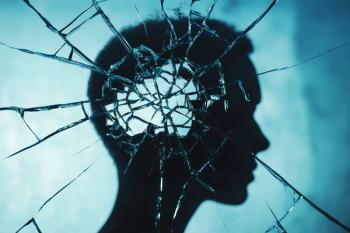
- Vol 42, Issue 5
From a Dysfunctional Neuromodulator to a Dysfunctional Circuit
Key Takeaways
- Schizophrenia symptoms span perception, reward, cognition, and movement, with dopamine playing a central role in these dysfunctions.
- Dopamine modulates critical brain circuits, including cortico-striato-pallido-thalamo-cortical loops, affecting cognition, reward, and sensorimotor functions.
Explore the complex role of dopamine in schizophrenia, its impact on symptoms, and potential therapeutic advancements.
SPECIAL REPORT: SCHIZOPHRENIA & PSYCHOSIS
Schizophrenia is characterized by dysfunction across multiple functional domains, as illustrated by the fact that patients with schizophrenia present a range of symptoms spanning the domains of perception, reward, cognition, and movement. These functions are supported by specific circuits in the brain, which are heavily modulated by the transmitter dopamine. Furthermore, effective drugs, initially discovered serendipitously in 1952,1 were later found to be dopaminergic drugs modulating the D2 receptors.2,3 To date, there is only 1 exception of a US Food and Drug Administration-approved drug that primarily modulates the cholinergic system.4 These findings led to a focus by researchers on exploring dopaminergic transmission and receptors in schizophrenia and investigating their relationships to disease vulnerability and symptom severity.
This short article describes the multiple physiological roles of dopamine in the brain and how these roles are relevant to the clinical symptomatology observed in schizophrenia by converging on 1 major circuit network in the brain. The article reviews the evidence for alterations of dopaminergic indices derived from imaging studies, the associated functional correlates, and the potential impact of these functional mechanistic insights on therapeutic developments.
Dopamine’s Roles in the Brain
The monoamine transmitter dopamine has many roles in the brain. It originates from the midbrain, where dopamine cells across the ventral tegmental area and substantia nigra project fibers onto terminal fields in the cortex, striatum, and other extrastriatal areas. Via its receptors, the D1 family, including D1 and D5, and the D2 family, including D2, D3, and D4, dopamine modulates many functions across brain networks: cognition, reward, perception, and movement. Dopamine modulates critical circuits in the brain that subserve these functions—the cortico-striato-pallido-thalamo-cortical loops (CSPTC loops) that include parallel circuits connecting brain regions in a topographically and functionally organized way. These include: (1) limbic loops, comprising projections from limbic cortical regions to the ventral striatum and subserving reward functions; (2) associative loops, with projections from cortical regions involved in cognitive control, working memory, and executive functions, such as the dorsolateral prefrontal cortex, to the midsection of the striatum or associative striatum and subserving cognitive functions; and (3) the sensorimotor loops, with projections from the sensorimotor cortex to the dorsal striatum mediating sensorimotor functions. As part of this circuitry, the efferent output from the striatum is divided into 2 projections: (1) the direct pathway, or GO pathway, containing D1 receptors, which has a facilitatory effect on thalamocortical outflow and the indirect pathway; and (2) the NOGO pathway, containing the D2 receptor, which has an inhibitory effect on thalamocortical outflow. These 2 pathways have a major impact on approach and avoidance across a range of behaviors, and the balance of GO/NOGO is critical in determining behavior, as observed in preclinical studies.
Dopamine significantly affects this balance, as it stimulates the D1/GO pathway and impairs the D2/NOGO pathway, thus tilting the balance toward the GO and impairing the NOGO. By blocking D2 receptors or decreasing stimulation at D2 receptors, psychotropics may reestablish the GO/NOGO balance, an important aspect of the therapeutic effect of drugs. This effect can be achieved by directly blocking D2 receptors and altering dopamine levels to reduce D2 stimulation indirectly via pharmacological modulation; it can also be achieved by targeting the circuitry directly with neuromodulation techniques such as deep brain stimulation of nodes along the CSPTC loops.
In addition to modulating the CSPTC flow, dopamine in the prefrontal cortex modulates locally the microcircuitry of GABAergic interneurons and glutamatergic pyramidal cells that subserve cognition via its cortical D1 and D2 receptors. The effect of this modulation is to enhance the inhibition of irrelevant inputs and the activity of relevant ones, sharpening the signal-to-noise ratio in the cortex. It is known that the sustained burst firing of specific pyramidal cells referred to as delay cells (because they fire in the absence of the target during the delay phase of working memory performance) in layer III of the prefrontal cortex is critical for working memory performance, and this firing is dependent on modulation by D1 receptors.5 In the ventral striatum, dopamine mediates the rewarding effects of drugs. The firing of dopamine cells in the ventral tegmental area that project to the ventral striatum is related to the experience of reward and the prediction of reward.6 These local effects (in the cortex and midbrain) converge onto the same CSPTC loops via their projections onto specific sections of the striatum to affect the flow of information from the striatum to the thalamus (
Evidence for Dopamine’s Involvement in Schizophrenia
The most direct evidence for abnormalities in dopamine transmission in the brain in patients with schizophrenia derives from molecular imaging studies. These have used different radiotracers and paradigms, and data have shown that dopamine synthesis and release are enhanced in the striatum, especially the associative striatum, leading to psychosis.7 The mechanisms that lead to the experience of psychosis are under investigation by many labs. We have shown that excess striatal dopamine is associated with an enhanced effect of expectations on auditory perception, leading to biased perception, and auditory hallucinations.8 The strength of expectations, or priors, is affected by the level of noisiness in the context. The effect of dopamine is to strengthen the impact of priors. This is consistent with a model of top-down modulation of auditory perception by the prefrontal cortex, as opposed to a bottom-up local overactivity within the auditory cortex itself leading to auditory hallucinations. However, more data are needed to confirm these findings and further disambiguate the exact mechanisms of this aberrant control of perception.
Another effect of abnormal dopamine in the striatum is the abnormal functional connectivity between the striatum and the rest of the brain, observed with resting state functional connectivity with functional magnetic resonance imaging.9 This dysconnectivity has been widely replicated.10 Its effects on function across corticostriatal pathways and the resulting outflow from the striatum through the direct and indirect pathways may explain the impact across multiple functional domains.
In addition to the finding of excess striatal dopamine transmission relating to psychotic symptoms, study findings have demonstrated that extrastriatal regions, including the cortex and midbrain, show a decrease in dopamine transmission.11 Low release in the cortex is associated with poor prefrontal cortical activation during working memory tasks and a deficit in working memory, at least on the N-back task.12 Similarly, results from imaging studies of the D1 receptors in prefrontal cortical regions have shown a relationship to cognitive deficits in schizophrenia.7 Altogether, the data from these studies provide support for D1-based therapeutics for cognitive deficits in schizophrenia. The midbrain is the area that houses dopamine cells across the ventral tegmental area and substantia nigra. The observation of low release in the midbrain suggests that dopamine cells in general are underactive, which could explain the low release in all extrastriatal regions but not how the excess in the striatum could emerge.
Mechanistic Implications of Findings
The disconnection between midbrain and striatal dopamine release in schizophrenia raises a mechanistic question. If dopamine release at the level of midbrain dopamine cells is underactive, how does one understand the excessive release in its projection onto the terminal field—ie, in the associative striatum? One possible explanation could be that a small number of overactive dopaminergic cells may be present in the midbrain, affecting release in the striatum despite their limited number, or it could be that local influences within the associative striatum from other modulators, such as acetylcholine, affect terminal DA release. For this reason, Weinstein et al examined the cholinergic system in the associative striatum in patients with schizophrenia compared with controls. This initial study of the distribution of cholinergic terminals in the striatum did not find any abnormalities13; however, it did indicate a correlation between the density of vesicular cholinergic transporters, which could be markers of cholinergic innervation, to the severity of psychosis and cognitive impairment in cortical regions in schizophrenia. The study authors also examined the influence of the opioid receptor system, specifically via the kappa receptors, known to affect both dopamine and D2 receptors, and did not detect abnormal distributions14; however, more work is needed to obtain a more comprehensive evaluation.
Another mechanistic question that emerges from the findings of dysregulated dopamine concerns etiology. Is dopamine dysregulation primary, leading to a cascade of additional events that culminate in the onset of schizophrenia, or is dopamine dysregulation a final “common pathway” as stipulated by some authors?15 Data are unclear in this regard. Evidence from genetic studies points to glutamatergic, synaptic, and immune-related genes in the risk for schizophrenia, but the specific effects of genetic vulnerability on the neurobiology remain uncharted. Some of these vulnerabilities may affect the dopaminergic synapses early on, which could lead to pathological brain development. As an illustration, a mouse model overexpressing D2 receptors in the dorsal striatum during development produced broad biological and behavioral alterations that are relevant to what is observed in schizophrenia,16 suggesting that dopamine dysfunction early on could lead to abnormalities in other systems and functions.
Many unanswered questions remain at this point. The exact cellular mechanisms of dopamine dysregulation in various brain regions in schizophrenia are unknown. Understanding these mechanisms is critical to developing better therapeutics. One common final pathway at the circuitry level is abnormal CSPTC function that may affect multiple functional domains. Therapies could target different aspects of this circuitry to reestablish normal flow. In particular, decreasing D2 stimulation in the striatum, either directly via binding by antagonists or partial agonists or indirectly by lowering dopamine levels, can reestablish the balance between GO/NOGO pathways (Figures
Dr Abi-Dargham is a distinguished professor and the chair of the Department of Psychiatry and Behavioral Health at Stony Brook University in New York, the Lourie Endowed Chair in Psychiatry, SUNY distinguished professor, director of the Multi-Modal Translational Imaging Lab, associate dean and associate vice president of Clinical and Translational Science, and principal investigator at Long Island Network for Clinical and Translational Science.
References
1. Delay J, Deniker P, Harl J.
2. Seeman P, Chau-Wong M, Tedesco J, Wong K.
3. Seeman P, Lee T.
4. Kaul I, Sawchak S, Correll CU, et al.
5. Gamo NJ, Lur G, Higley MJ, et al.
6. Schultz W, Dayan P, Montague PR.
7. Weinstein JJ, Chohan MO, Slifstein M, et al.
8. Cassidy CM, Balsam PD, Weinstein JJ, et al.
9. Cassidy CM, Horga G, Van Snellenberg J, Slifstein M, Abi-Dargham A. Internetwork connectivity during working memory: relationships to task performance and cortical dopamine release capacity in healthy controls and schizophrenia patients. Schizophr Bull. 2015;41:S219-S219.
10. Sarpal DK, Robinson DG, Lencz T, et al.
11. Slifstein M, van de Giessen E, Van Snellenberg J, et al.
12. Van Snellenberg JX, Girgis RR, Horga G, et al.
13. Weinstein JJ, Moeller SJ, Perlman G, et al.
14. Slifstein M, Qu W, Gil R, et al.
15. Howes OD, Kapur S.
16. Simpson EH, Kellendonk C.
Articles in this issue
7 months ago
"Transference"7 months ago
The Double-Edged Sword of Affluence8 months ago
The Therapeutic AllianceNewsletter
Receive trusted psychiatric news, expert analysis, and clinical insights — subscribe today to support your practice and your patients.













